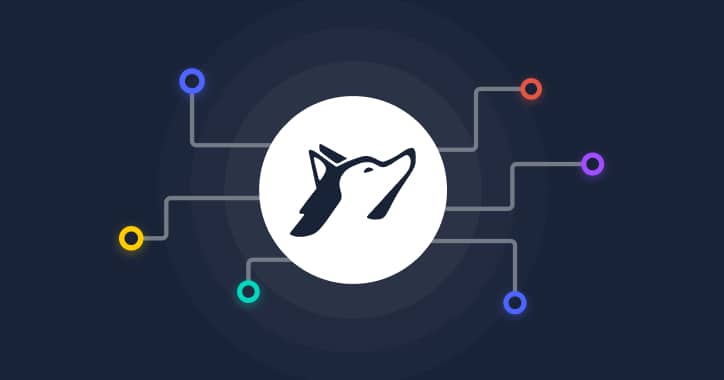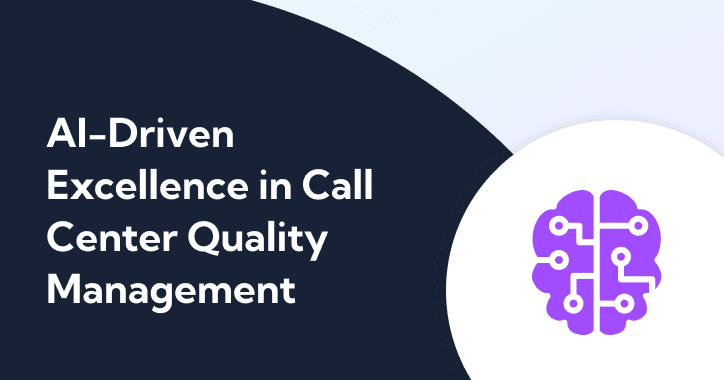You’ve got a contact center team of all-stars. They’re comfortable on the phone, pleasant, and knowledgeable. However, call times are extensive, and escalations are prevalent. So, where’s the missing link?
According to our revealing Real-Time Index report on contact center call trends, it could be the lack of active listening.
We compiled data on 140 million calls in six industries, including utilities, collections, and insurance, evaluating the use of soft skills like questioning, proactivity, empathy, credibility, and active listening, and the results might surprise you.
Most soft skills emerged as industry-related. For example, empathy was present in nearly half of all collection calls but underutilized in retail-related interactions. However, two were consistent across the board: questioning was always a part of the conversation, while active listening was lacking.
What Are Soft Skills?
All employees bring to the table a set of defined and undefined skills. Defined expertise tends to be more quantifiable and proven. It encompasses abilities like proficiency in Microsoft Office or a five-year sales track record with a 70% closing rate.
Soft skills, like active listening, creative thinking, and proactiveness, aren’t as much the work you do but how you do it. They can be equally valued, though. The top global job site, Indeed, identifies active listening as a skill associated with workplace success, affecting hiring and promotion.
Defining Active Listening
Active listening is a conscious effort to focus on what’s being said and understand the complete message conveyed.
Implementing active listening in the work environment is a two-part process:
- Undivided attention to what the other person is communicating.
- Confirming or clarifying their main point(s) with statements like “If I understand correctly….” or “So your concern is….”
A study by Psychology Today revealed that we only retain about half of what someone has just said to us. Instead of staying present on the receiving end of the conversation, we’re too busy thinking about what we’ll say next.
Active listening requires us to pay attention because we’re about to paraphrase what we heard.
Questioning vs. Active Listening
Our in-depth survey identified questioning as a highly implemented soft skill while active listening was underutilized. Even though part of active listening involves recapping the situation or posing questions based on the initial information provided, questioning is much different.
Questioning is more of a verification process or conversation starter. It covers general inquiries that don’t really establish a rapport, like “Who am I speaking to today?”.
Active Listening Activates Other Soft Skills
On the other hand, implementing questions into an active listening practice leads to other essential soft skills, like agreeability, rapport, respect, empathy, and understanding.
The queries are based on what the other person is saying instead of generic conversation-starters. A successful active listening technique is to respond with, “If I understand correctly, your concern is (X). Is that accurate?”
The Positive Impact of Active Listening in Contact Centers
Regardless of the industry, all contact centers have a few consistent goals:
- Quality service
- Providing accurate information
- Short call times
- First-call resolution
Effective active listening practices are proven to impact all four objectives positively.
Quality Service
Customers or clients are more likely to trust and be optimistic about a business when they feel heard.
Accurate Information
A thorough understanding of the situation leads to accurate and beneficial responses.
Shorter Call Times
Engaging in active listening keeps the call on track. Time-wasting back and forth is eliminated with undivided attention and precise comprehension.
First-Call Resolution (FCR)
Calling a company back because an agent didn’t get the complete picture the first time is frustrating for customers. Active listening is one of the top in-call strategies for FCR, benefitting both the customer and the contact center.
Other Benefits of Active Listening in Contact Centers
Active listening naturally enhances other soft skills like empathy and establishing a rapport, all beneficial to successful interactions.
Other benefits include:
- Fewer escalations
- Reducing customer frustration
- Limiting mistakes
- Better co-worker relationships
Strategies for Improving Contact Center Active Listening Practices
Like other soft skills, active listening is the most effective when it becomes habitual, which can take some time. However, there are some tactics for expediting the learning process.
Note-Taking
One of the easiest ways for a team to start and stay on course with active listening is to have a good old pad and paper at every workstation. Jotting down notes not only requires focus but makes it easier to summarize the situation.
Role Play and Reverse Role Play
Practice makes perfect, so role play is an excellent training technique. Alternating roles is also helpful to see the effectiveness from the customer’s point of view.
Coaching
Internal communication is an essential soft skill for anyone in a leadership role. That includes regularly employing active listening within the team and coaching on its effectiveness.
Active Listening Tips and Best Practices
When getting agents on board with active listening practices, clarify that confirming doesn’t mean affirming. You might have some team members who are hesitant to repeat what the customer is saying if they disagree with it. But reiterating the question indicates understanding, not necessarily agreement.
Other tips:
A personal touch is best – A rote response isn’t part of successful active listening practice. The customer wants to feel heard. So, reacting by sharing a similar story or showing empathy for their situation is better.
Acknowledgment, not interruption – You demonstrate that you’re paying attention with a quick nod when you’re in person. On the phone, it might take something like an “I see” or “I understand” along the way. You don’t want to stop the flow, but you also don’t want the other person to carry on for a few minutes without recognition.
Pointed questions – Even though you’ve listened intently and taken notes, you still might not have the complete picture. A good technique is to reiterate what you’ve learned and immediately pose a follow-up question that addresses the rest.
The Best Active Listening Strategy for Immediate Results
Even with coaching, practice, and note-taking, contact center agents are thrown so many curveballs and are tasked with overcoming objections that it’s challenging to keep active listening skills on track. But that’s where Balto shines with its Real-Time Guidance.
Employing Real-Time Guidance is like having a full-time coach on every call. It takes a soft skill like active listening and turns it into a technical skill with checklists and reminders.
Benefits of Real-Time Guidance
Balto’s Real-Time Guidance reminds agents when they’re doing most of the talking and not enough listening. It’s also a coaching tool for managers, allowing them to ensure agents are expressing understanding of their customers’ problems and questions. Real-Time Guidance’s checklists will help agents respond appropriately if the conversation takes a turn.
When you’re ready to close the gap with active listening leading to shorter call times, fewer escalations, and first-time resolutions, Balto provides immediate and proven results. Schedule a demo today.
Agent Performance, Unleashed
Unite agents with AI for conversations that deliver results. Empower your team using real-time guidance with Balto.






